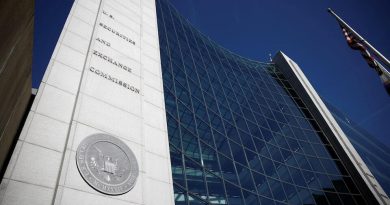U.S. Job Growth Expected to Rise Moderately in September Despite Ongoing Labor Market Strains
Economists see signs of a slow but steady labor recovery as September hiring edges higher. Delays from the government shutdown add pressure to the next major jobs release.
U.S. job growth is expected to have increased at a moderate pace in September, offering a measured signal of resilience in a labor market that continues to lose momentum. Economists say the numbers will reflect ongoing challenges but also pockets of steady demand.
Forecasts point to nonfarm payrolls rising by nearly 50,000 jobs, marking an improvement from August’s subdued performance. The unemployment rate is projected to remain at 4.3%, hovering near a four-year high.
This upcoming report has drawn heightened attention because it arrives after a 43-day government shutdown. That delay forced officials to cancel the October employment release altogether.
The canceled data will now be merged with the November job report, scheduled for December 16. The backlog has left analysts relying on older figures to track labor conditions.
Before the shutdown, estimates indicated a downward revision of roughly 911,000 jobs over a one-year period. The update underscored how sharply hiring has slowed compared to earlier projections.
Economists say September’s expected increase still signifies a cooling trend rather than a collapse. They argue the labor market appears to be stabilizing at lower levels of monthly job creation.
Some analysts believe August’s extremely weak gain of 22,000 positions reflected unusual seasonal patterns. They expect the September report to correct that distortion and present a clearer outlook.
Labor supply remains a central challenge, stemming from immigration reductions that began in the final months of the previous administration. Lower population growth means the economy now needs far fewer new jobs each month to maintain stability.
Experts estimate monthly job creation needs have fallen to between 30,000 and 50,000 positions. That marks a steep drop from the 2024 benchmark of roughly 150,000.
The unemployment rate has held within a narrow band for much of the year, indicating only modest softening. Economists say this suggests the slowdown largely reflects reduced labor supply rather than widespread layoffs.
The growing adoption of artificial intelligence is also shaping the employment landscape. AI-enabled technologies have reduced demand for entry-level roles, closing off traditional pathways for new graduates.
This shift is contributing to what some call “jobless economic growth,” where output rises but hiring lags behind. Small businesses, already navigating uncertainty, appear particularly affected.
Some scholars argue that recent trade policy developments have amplified these challenges. They say shifting tariff rules and pending court decisions have limited the ability of firms to plan and hire.
While overall payrolls remain positive, several industries are now showing signs of contraction. Smaller and mid-sized companies, in particular, report difficulty managing rising costs and uncertain demand.
Analysts note that these employment trends could influence upcoming Federal Reserve deliberations. The central bank meets December 9-10, without the benefit of November’s employment report.
Minutes from the Fed’s recent meeting show caution about further interest-rate cuts. Officials worry premature easing could hamper efforts to control inflation.
Economists say only an unusually weak September report would shift the balance toward additional rate reductions. Otherwise, policymakers may prefer to wait for more complete data later in the year.
As the country awaits the consolidated October-November figures next month, economists say September’s release will provide crucial context. It may help indicate whether the economy is stabilizing, weakening, or simply adjusting to long-term structural changes.



